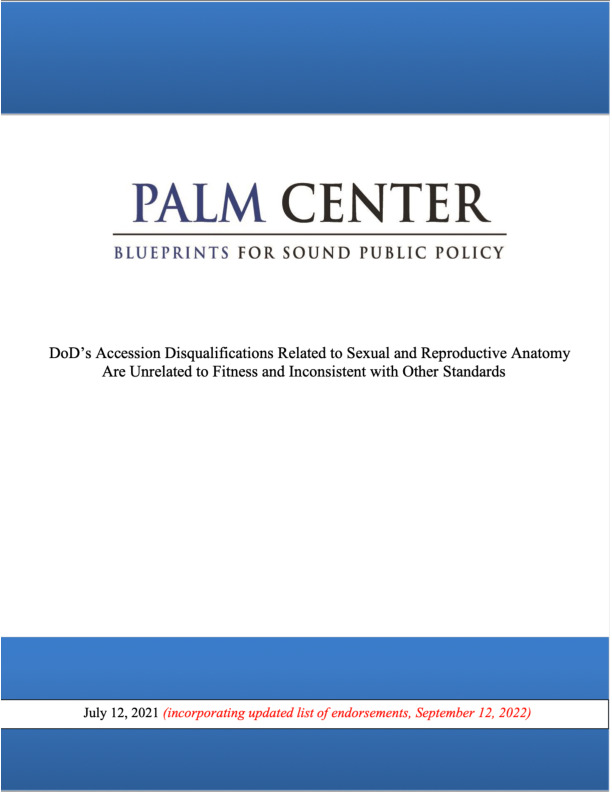DoD’s Accession Disqualifications Related to Sexual and Reproductive Anatomy are Unrelated to Fitness and Inconsistent with Other Standards
Defense Department regulations long disqualified applicants with a history of “hermaphroditism” as part of a broader disqualification for “major abnormalities or defects of the genitalia.” In 2021, the Palm Center wrote a policy memo arguing that the disqualification was inconsistent with standards applied to other applicants with similar medical histories. The memo suggested that conversion of the blanket disqualification into a standard based on individual assessment of fitness to serve would enhance readiness. Twenty-one organizations including the Endocrine Society endorsed our memo (see PDF page 2), and we provided our research to Defense Department officials.
On November 16, 2022, the Department of Defense revised its regulations and removed the blanket ban, now disqualifying applicants with an intersex condition only if it is undiagnosed or untreated, and replacing the automatic disqualification with a standard based on individual assessment of fitness for service. While a few consequences of intersex conditions that happen to overlap with consequences of other, unrelated conditions remain disqualifying, we anticipate disqualifying circumstances to be rare, as most applicants with intersex conditions will likely have undergone medical evaluation and treatment. Thus the Defense Department has effectively lifted the intersex ban for most applicants.
In 2017, the Palm Center published a policy memo by three former US Surgeons General who argued that children born with atypical genitalia should not have genitoplasty—cosmetic genital surgery meant to make an infant’s genitals “match” the binary sex category they are assigned by adults—performed on them absent a need to ensure physical functioning.
